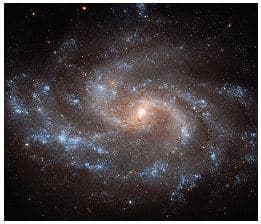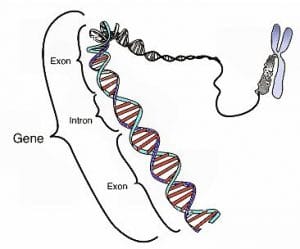by CARM STAFF | Oct 18, 2011
The future is that aspect of time that deals with events that have not yet happened. The future is what will exist but does not now exist.
by CARM STAFF | Oct 19, 2020
Gaia is the Greek goddess representing the Earth and is an equivalent of Mother Nature. The word is derived from the Greek “gaia.” Gaia is often worshipped in New Age philosophies and is seen as the earth goddess with whom people need to fellowship as they...

by CARM STAFF | Aug 6, 2011
A galaxy is a large arrangement of stars held together by gravitation. Galaxies tend to have billions of stars and are thousands of light-years across. Galaxies take many different forms, including spirals, rings, elliptical, and irregular...
by CARM STAFF | Aug 7, 2011
A gamete is a reproductive cell, such as a sperm or egg cell. When the sperm and egg come together and fertilize, a zygote is formed. Sperm move. Eggs do not. The gametes, sperm, and egg each contain one set (haploid) of the total number of chromosomes necessary for...
by CARM STAFF | Oct 19, 2020
The gap theory is the idea that there is a gap in time between Genesis 1:1 in Genesis 1:2. The gap lasted for millions of years and accounts for the dinosaurs. This theory was begun by a Scottish minister named Chalmers in 1814. Gen. 1:1, “In the beginning, God...
by CARM STAFF | Aug 7, 2011
Gas is the state of molecules that is neither solid nor liquid and has no defined shape or volume and that allows their free distribution, expansion, and movement. Air is in the form of a gas.
by CARM STAFF | Jan 30, 2010
Gehenna was originally a location southwest of Jerusalem where children were burned as sacrifices to the god Molech. It later became a garbage dump with a continuous burning of trash. Therefore, it was used Biblically, to illustrate the abode of the damned in...

by CARM STAFF | Oct 19, 2020
Gematria is the study of the numeric equivalents of Hebrew and Greek letters in order to find hidden meanings in the words. In both Hebrew and Greek (the languages in which the Bible was written), there are only alpha characters. There are no numeric characters....
by CARM STAFF | Sep 6, 2011
Gender is the biological differentiation between males and females. In humans, males are generally larger and stronger than females. Males produce sperm, and females produce eggs. Males have testicles and females do not. Males do not menstruate where females do....

by CARM STAFF | Aug 7, 2011
A gene is a physical unit of DNA that contains nucleotides and carries a hereditary trait, such as eye color, height, etc., that is passed down from generation to generation. Genes hold the information that physically constructs the living organism–giving it...




Recent Comments